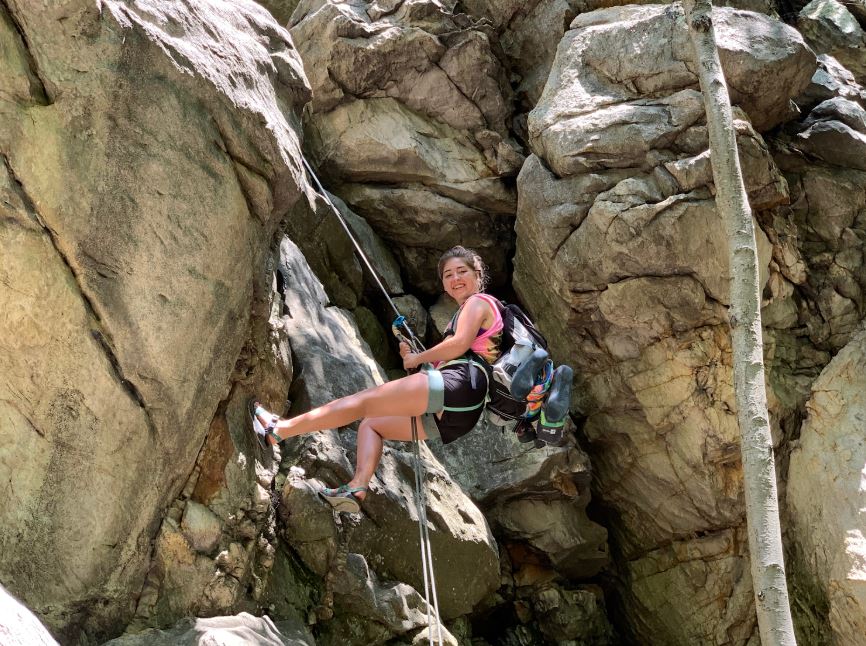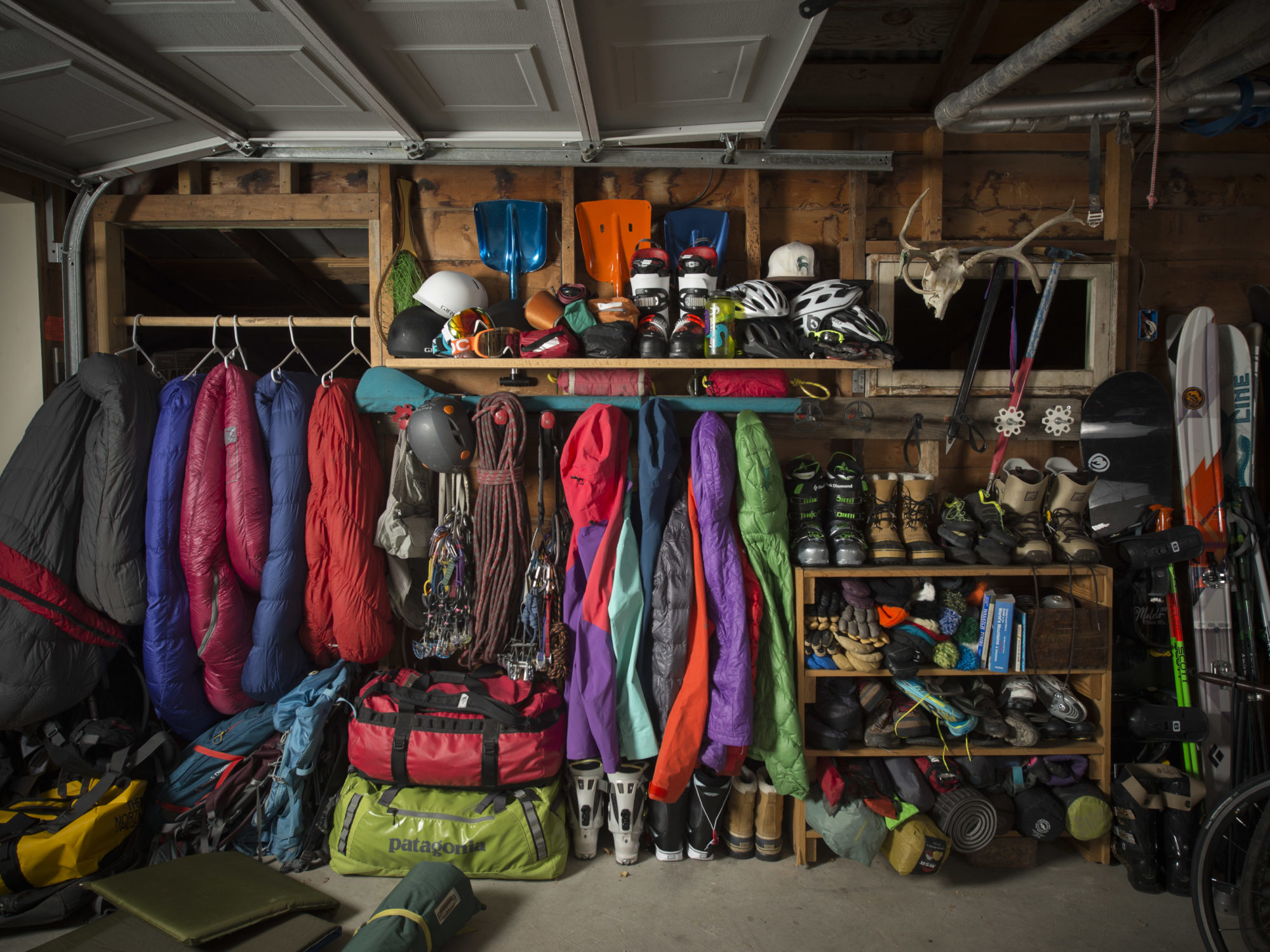By Bryn Wooten
As outdoor enthusiasts and guides, we have a shared love of being in nature and participating in outdoor recreation, and we know all too well just how expensive doing that can get! Not everyone can shell out hundreds of dollars for a top-of-the-line tent or a new Patagonia jacket, but as luck would have it, these aren’t true necessities for enjoying the outdoors! As a college student, I’ve picked up lots of tricks on how to maximize the bang for my buck in outdoor recreation. Whether you’re a student like me, a parent wanting to make affordable family trips, or anyone else on a shoestring budget, these tips and resources will help you plan and execute a fun, yet affordable outdoor adventure!
1. Make use of free online resources when planning
There are TONS of great online resources that you can access for free to help you plan your trips. Going hiking or backpacking? The app and website AllTrails has a large database of trails that you can filter by area, and find information about the length, type of trail, elevation gain, topography, difficulty, and need to know bits and pieces from reviews left by other hikers. You can also access a map of the area and download directions to the trail head, which is great for when you’re going to be out-of-service.
Another great online resource comes directly from REI. The REI Adventure Projects are individual websites that are divided by recreation type and provide detailed information about trails, routes, runs, etc. They currently have project sites for climbing, hiking, trail running, mountain biking, backcountry snow sports, and a general national parks guide. Each website is formatted similarly to AllTrails, and you can see the location, approach directions, and detailed notes about whatever activity you’re trying to do.
You can also find free campgrounds from a plethora of sites depending on your area. If you’re unsure of whether your destination has free camping, do your research! A lot of parks will do their best to advertise the paid, established campgrounds first, but look a little closer to see whether unestablished (sometimes called primitive) camping is allowed in the park. You have to work a little harder to find these spots when you’re on site, but the effort is worth it if you like more privacy and a free place to pitch your tent!
2. Always look for used versions of the gear you need
Whether you’re looking to buy a new sleeping pad, climbing harness, or backpack, you should always check for a used version before buying from a retail store. Some online stores like REI and Outdoors Geek have marketplaces for used gear that you can buy directly. You can also look on online marketplaces like eBay and Craigslist, although there won’t be a guarantee of the condition the gear is in.
One of my favorite ways to shop for used gear is at thrift stores. You’d be surprised what you can find at your local general thrift store, and it’s worth taking a look before making a big purchase. Depending on the area you live in, you may also have a local gear thrift store that exclusively sells outdoor equipment. Most of the time this equipment is gently used and priced much lower than retail stores. Another bonus of buying gear from a thrift store is that you can visually inspect it for any damage that would make it less usable. This is also a huge way to help reduce your personal material footprint and promote reusability!
It’s important to note here that not all gear is safe to buy used. For example, while a used tent is perfectly fine, you wouldn’t want to purchase a used climbing rope.
3. If you’ll only need to use it once or twice, rent it!
Some trips may require use of specialty gear that requires a larger financial investment. For example, many state parks in Colorado prohibit the use of bear bags and backpackers are required to carry bear canisters. If you’re making a week trip out to Colorado, but you live in Louisiana where bear canisters are not required, you probably won’t want to spend a lot of money on a brand new bear canister. Renting gear that you’ll only need to use for a specific trip is a great alternative. Check your local gear outfitters and recreation centers to see if they offer gear rentals.
Hint – if you’re a Tulane student, you can rent gear at discounted prices from yours truly, TU Outdoor Adventures!
4. Don’t fall into the trap of functional fixedness
And by that I mean, get creative about multiple uses for each piece of gear you own. If you already have a camping stove and pot, you can probably get by without a pan; ball up your jacket to use as a pillow; or turn the rainfly from your tent into a cover for hammock camping. There are endless variations of outdoor gear, and with a little ingenuity, you can find unintended uses for the gear you may already own rather than having to buy something new.
5. Plan your meals
This one may sound like a no brainer, but it’s a super important one! Having to go buy freeze dried meal packs at $12 a pop because you forgot to plan your meals is not fun – especially when the food you can prepare and bring yourself is often much better for you and tastier!. Coming up with a concrete plan of what you’re going to eat can go a long way to save money. If you’re bringing a camping kitchen with you (i.e. stove, pots/pans, knives, fresh ingredients, the whole 9!), try to cross-reference your recipes and find one’s with overlapping ingredients. Don’t let that ½ a white onion go to waste! If you’re backpacking and trying to travel light, mac and cheese is a cheap, lightweight yet filling meal that you can remove from its packaging before you set off (Flavor-town hint – try spicing it up with a little taco seasoning).
6. Travel in a group
If you’ve got some outdoor adventure buddies, bring them along for the ride! Traveling in small groups helps to spread out the cost of food when making bulk meals, and your friend may have some gear that you don’t. By sharing gear, you’ll all ensure that you have what you need without having to make a trip to the outfitters.
7. Transportation
If you’re staying close to home, then transportation might not be much of an issue. But if you’re longing for a cross country adventure or don’t have access to a car, get creative with your modes of transportation! If you’re staying local, check your area’s bus routes to see how close you can get to your destination. Depending on the area, you might be able to get within walking distance. If you’re going across state lines, there are also plenty of bus companies that offer cheap, long-distance bus routes between larger cities. Once you’re at the nearest city, you can try out smaller bus lines to get a little closer. Beware: don’t try to take an Uber or a Lyft to your trail head! It may seem like a great way to get there, but when your adventure is done you can’t count on having cell service or available drivers to come get you.
And that’s that! I hope you’ll be able to put some of these tips to use on your future outdoor adventures. Happy adventuring, and happy saving!
About the author:

Name: Bryn Wooten
Year in School: Junior
Major: Neuroscience and Psychology
Hometown: Colorado Springs
Favorite Outdoor Activity: Climbing
Favorite Camp Food: Mac and cheese with taco seasoning
Ideal Outdoor Adventure Trip Destination: Climbing and backpacking in Southeast Asia
If you were stranded on a desert island, what/who would you bring with you: a boat
